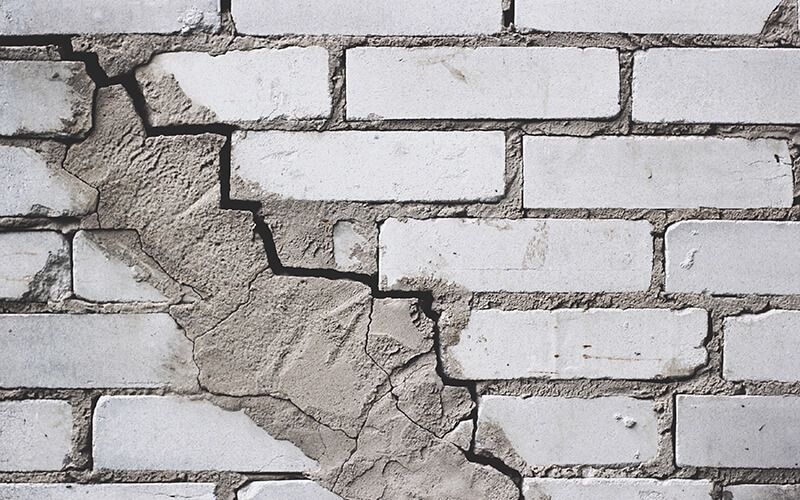You could usually spot signs of foundation wall bowing quickly, even in their onset, if you periodically inspect your basement. The most common indications of bowed walls are cracks and water leaks caused by unstable soil, water buildup, or tree roots pushing from the outside.
Most of the time, developing cracks between basement walls made of concrete blocks follow the joints creating a “stair-step crack” or a horizontal crack near the midpoint. Meanwhile, the cracks often follow a diagonal path for poured concrete walls starting from the corners going into the center. In any case, when combined with lateral loads from the outside, inward tilting and bowed walls frequently follow after such cracks appear.
Such issues usually take a slow and gradual process that could worsen over time if left alone. They could quickly bring down your house’s real estate value and create safety hazards, which are expensive and time-consuming to resolve. Cracks are also one of the leading causes of basement water damage, and having a bowed foundation wall could pose a severe problem.
This article looks into three common ways on how to repair bowed walls.
Methods For Repairing Bowed Walls
To determine the method best for repairing bowed walls depends on how extensive the wall is bowing. More advanced damages would require more expensive and time-consuming solutions. To avoid this issue, it means that you need to take action as early as possible.
However, for your best interest, you need to know that repairing bowed walls does not always mean it goes back to its original position. The purpose of such repairs is to secure and stabilize the wall avoiding further damage.
Based on the extent of the problem, there are three widely used methods for repairing bowed basement walls: carbon fiber straps and staples, wall anchors, and helical tiebacks.
Carbon Fiber Straps And Staples
The simplest way of reinforcing bowed walls is to use carbon fiber straps or staples. They are a good choice when the damage is minimal with less than two inches of bowing. This method is also the cheapest and fastest remedy to install, preventing further complications. It also involves no excavation making it less labor-intensive.
When cracks appear along your foundation walls, it is advisable to use straps or staples after filling the voids with either polyurethane or epoxy injection. Made with high tensile strength carbon fibers, these materials help hold your walls together, keeping cracks from progressing.
To achieve the best results for carbon fiber straps, they need to be connected to the basement wall’s foundation and the sill plate above. This distributes the stress on the center of the bowed wall evenly from top to bottom.
Wall Anchors
When the bowing of your basement wall exceeds two inches, you have to consider using steel wall anchors to secure it. This method requires more labor and time to install than carbon fiber straps, as you or contractors need to work both inside and outside of the basement.
Installing wall anchors entails a certain amount of excavation of at least 10 feet outside the affected basement wall. This means that there should be enough accessible and usable space to safely and adequately place the steel plates into the ground. You would also need to think about the elements impacted by the digging, such as porches, decks, sidewalks, and other structures.
A steel shaft connects a steel plate or channel attached to the inside of your basement wall and the one buried outside in the ground. Tightening the rod pulls the inside anchor along with the wall towards the outer plate, creating tension and locking it in place.
Contractors usually recommend placing anchors roughly 5 feet from each other along the bowing wall.
Helical Tiebacks
If you have limited space outside your basement to install anchors, you could consider using helical tiebacks as the next best option. This method is used for basement walls with more than two inches of bowing. However, helical tiebacks are the most expensive of the three systems.
Contractors would drill a screw-like steel shaft from the basement wall’s inside at an angle through the earth on the other side. The shaft attaches to large vertical steel channel fastened to the floor and runs upward near the top. This restores the structural ability of the wall without the need to excavate.
Keep in mind that as soon as you spot signs of a bowed wall, you should immediately act and address the issue before it leads to more significant problems. If you see cracks and leaks, consider the possibility that you might be having a bowing wall. You can always consult experienced professionals to identify and help solve the problem, especially when repairing such issues involve using non-household tools and materials.

